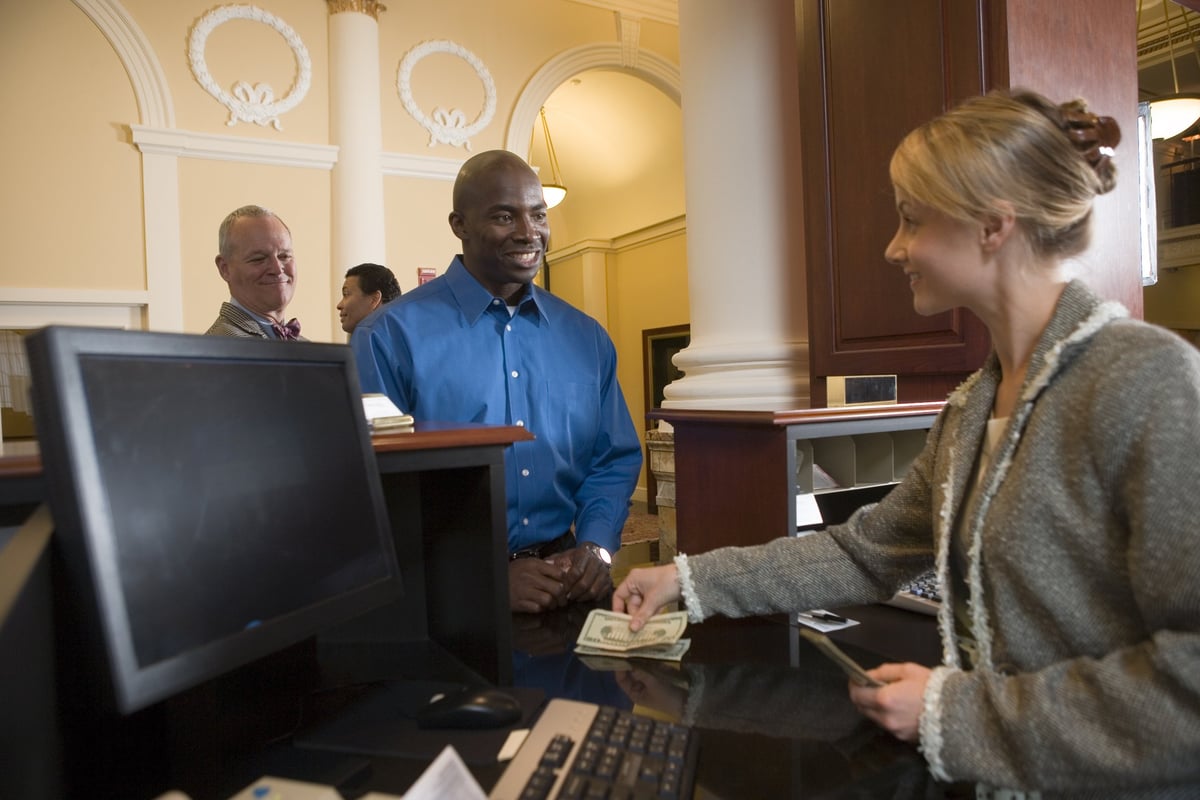
Banks fail. They have a long history of doing so. You may think that the biggest bank failures are long behind us. But that’s not true — the largest bank failure in history happened in 2008, when Washington Mutual collapsed during the 2008 Financial Crisis.
The second, third, and fourth-biggest bank failures happened in 2023. One year ago! And those are only the biggest failures. Since 2000, an average of 25 banks per year have gone bankrupt. (Many of these happened during big financial crises.)
Financial crises are predictably unpredictable. The San Francisco Fed estimates they happen once every 25 years on average, though precisely which year the next will appear remains a hotly debated topic among forecasters. Crisis means panic, and panic leads to bank failures.
It’s a safe, conservative bet to believe the biggest bank failures are ahead of us. It’s one I’m willing to make, if only to prevent myself from being taken by surprise. And I’m not the only one.
Our Picks for the Best High-Yield Savings Accounts of 2024
|
American Express® High Yield Savings 
APY 4.25%
|
APY 4.25%
|
Min. to earn $1 |
|
Citizens Access® Savings 
|
Min. to earn $0.01 |
|
|
Bask Interest Savings 
|
Min. to earn $0 |
After the recent collapse of Silicon Valley Bank and a few other high-profile banks, people panicked. Many are flocking to big banks, and for good reason — they’re “safe.” But are they really? If so, how? Here’s what happens when you bank with one of the safest financial institutions in the world.
Your money is secured for up to $250,000
The safest banks in the U.S. have one thing in common: they’re all insured by the Federal Deposit Insurance Corporation (FDIC). The FDIC guarantees that if your bank collapses, for whatever reason, you’ll get your deposits back, up to $250,000.
The FDIC is backed by the U.S. government, to the tune of billions of dollars of taxpayer money. Unless you think the government is going to collapse, it’s safe to assume you’re covered.
Some banks offer even more FDIC insurance than the standard figure. SoFi® insures deposits with the FDIC up to $2 million, partnering with allied banks to keep your money safe. It’s an uncommon perk and why SoFi® is one of the safest financial institutions out there.
You may become part of a bank that’s “too big to fail”
When Silicon Valley Bank collapsed in 2023, the FDIC didn’t step aside and let the bank die. It could have. You could even argue it was supposed to. Though the bank’s depositors were FDIC insured, many had more than $250,000 on deposit. Some deposited millions of dollars.
Hundreds of millions.
With so much at stake, tensions ran high. The fear was that if people didn’t get their money back, this tension would spread, causing more bank runs and more failures. The U.S. government stepped in with a “one-time” solution: reimburse everyone 100%.
One takeaway is that when your bank is big and important enough, the government is willing to bend over backward to keep you from panicking. It’s not guaranteed — legally, the government could have let depositors at SVB lose their money — but it’s an extra safety net.
A net that saved thousands of depositors up to hundreds of millions of dollars in 2023.
You get uncommon or rare security features
FDIC protection and size are perks of the safest banks, but what about fraud protection? You can lose money without your bank going under. It happens all the time.
To prevent fraud and theft, the safest financial institutions offer uncommon security features like two-factor authentication, cards with EMV chips, and 24/7 customer service. A few offer truly rare perks like debit card blocking and next-day cash reimbursement.
You may sacrifice great rates for better security
Chase is one of the safest banks in the world. But its savings accounts offer truly terrible rates compared to other banks. The reason is partly because it’s so expensive to maintain physical bank branches, of which Chase has thousands.
This is a thread common to big, safe banks with in-person locations. Brick-and-mortar banks tend to offer much worse rates than online banks (Capital One being a notable exception).
But when banks are collapsing and you’ve got more than $250,000 in cash, it may be worth sacrificing a higher APY for better security. It takes years to build a savings account balance, but you can lose hundreds of thousands of dollars overnight.
No bank is truly 100% immune to the possibility of failure. But some are safer than others.
The question worth asking is, how much am I willing to risk? The answer depends on where your priorities lie, and determines whether you’ll bank at one of the safest financial institutions.
These savings accounts are FDIC insured and could earn you 14x your bank
Many people are missing out on guaranteed returns as their money languishes in a big bank savings account earning next to no interest. Our picks of the best online savings accounts could earn you 14x the national average savings account rate. Click here to uncover the best-in-class accounts that landed a spot on our short list of the best savings accounts for 2024.
Here’s What Happens When You Bank With One of the Safest Financial Institutions #Heres #Bank #Safest #Financial #Institutions

Source Link: https://www.fool.com/the-ascent/banks/articles/heres-what-happens-when-you-bank-with-one-of-the-safest-financial-institutions/
Here’s What Happens When You Bank With One of the Safest Financial Institutions – Information Important Web
#Finance – BLOGGER – Finance, Bank, Financial, Heres, Important, Information, Institutions, Safest, Web